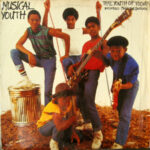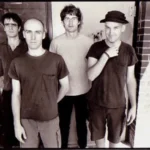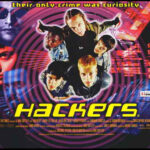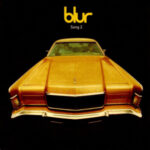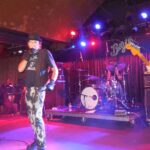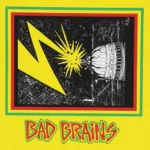 Bad Brains is a name that resonates with those familiar with the evolution of hardcore punk and reggae. Emerging from Washington, D.C., in the late 1970s, the band broke boundaries with their intense energy, groundbreaking sound, and unapologetic attitude. From their formation to their legacy as musical innovators, the story of Bad Brains is one of resilience, revolution, and relentless creativity.
Bad Brains is a name that resonates with those familiar with the evolution of hardcore punk and reggae. Emerging from Washington, D.C., in the late 1970s, the band broke boundaries with their intense energy, groundbreaking sound, and unapologetic attitude. From their formation to their legacy as musical innovators, the story of Bad Brains is one of resilience, revolution, and relentless creativity.
The Beginnings: Mind Power and the Birth of Bad Brains
Bad Brains was formed in 1976 by Paul Hudson (H.R.), Gary Miller (Dr. Know), Darryl Jenifer, and Earl Hudson. Before they adopted their iconic name, the group was initially a jazz-fusion ensemble called Mind Power. Influenced by the virtuosity of jazz legends like Miles Davis and John Coltrane, the band members were skilled musicians honing their craft.
Their musical direction took a drastic turn after Dr. Know introduced the rest of the band to punk rock through groups like the Sex Pistols and The Ramones. Intrigued by the raw energy and DIY ethos of punk, Mind Power transformed into Bad Brains, a name inspired by the Ramones’ song “Bad Brain.” This transition marked the beginning of a groundbreaking era for the band and the punk scene.
The D.C. Hardcore Scene: Speed and Fury
Bad Brains quickly became a staple of the burgeoning hardcore punk scene in Washington, D.C. They stood out not only for their blistering speed and intensity but also because they were an all-Black band in a predominantly white genre. Their early shows were known for their electrifying energy, with H.R. delivering ferocious performances and the band playing at breakneck speeds.
Songs like “Pay to Cum,” their debut single released in 1980, epitomized the hardcore punk ethos. Clocking in at under two minutes, the track showcased their unparalleled speed, precision, and rebellious spirit. The song became a defining anthem of the hardcore punk movement and established Bad Brains as trailblazers.
Rastafarianism and Reggae Fusion
By the early 1980s, the members of Bad Brains had embraced Rastafarianism, which significantly influenced their music and philosophy. This spiritual transformation introduced reggae into their repertoire, creating a unique blend of hardcore punk and roots reggae. Songs like “I and I Survive” and “Jah Calling” showcased their ability to seamlessly transition from frenetic punk to mellow, rhythmically intricate reggae.
This duality in their sound was both revolutionary and polarizing. Some hardcore fans were confused by the inclusion of reggae, while others embraced the depth and versatility it added to the band’s music. Regardless, this fusion became a hallmark of Bad Brains’ identity, distinguishing them from their peers.
Iconic Albums and Milestones
Bad Brains’ self-titled debut album, often referred to as the “Yellow Tape,” was released in 1982 on cassette only. Produced by Ric Ocasek of The Cars, it captured the raw energy of their live performances and included classics like “Banned in D.C.” and “Attitude.” The album is widely regarded as one of the greatest punk albums of all time and a cornerstone of the hardcore genre.
Their subsequent albums continued to push boundaries:
- “Rock for Light” (1983): This album, also produced by Ric Ocasek, polished their sound while retaining their intensity. Tracks like “Big Takeover” and “Sailin’ On” solidified their reputation as pioneers.
- “I Against I” (1986): A creative leap forward, this album incorporated elements of funk, metal, and soul. H.R.’s vocal range and the band’s technical prowess shone on tracks like the title song and “Re-Ignition.”
- “Quickness” (1989): With its heavier sound and socially conscious lyrics, this album reflected the band’s evolving musical direction.
Challenges and Lineup Changes
Despite their musical successes, Bad Brains faced numerous challenges. Internal conflicts, struggles with substance abuse, and H.R.’s erratic behavior often disrupted the band’s cohesion. H.R.’s unpredictable nature became a defining, albeit tumultuous, aspect of the band’s history.
Throughout the years, the band experienced several lineup changes. H.R. and his brother Earl would intermittently leave and rejoin the group, creating periods of instability. However, their core remained intact, and the band’s spirit endured.
Legacy and Influence
Bad Brains’ influence extends far beyond the hardcore punk scene. Their groundbreaking fusion of genres and uncompromising artistry inspired countless musicians across diverse genres, including heavy metal, hip-hop, and alternative rock. Bands like Fishbone, Living Colour, and Rage Against the Machine have cited Bad Brains as a significant influence.
The band’s ability to break racial and musical barriers also left a lasting impact. As one of the few Black bands in punk, they paved the way for greater diversity within the genre and challenged stereotypes about what punk could be.
Later Years and Recognition
In the 1990s and 2000s, Bad Brains continued to release music and perform, albeit sporadically. Albums like “God of Love” (1995) and “Build a Nation” (2007) showcased their enduring creativity, though they received mixed reviews compared to their earlier works.
In 2017, the band was honored with the Grammy Lifetime Achievement Award, a recognition of their contributions to music and culture. This accolade cemented their legacy as pioneers and innovators.
Conclusion: A Revolutionary Force in Music
The history of Bad Brains is a testament to their resilience, creativity, and revolutionary spirit. They defied conventions, broke barriers, and created a legacy that continues to inspire. From their explosive punk beginnings to their soulful reggae explorations, Bad Brains remain one of the most influential and groundbreaking bands in music history. Their story is not just one of a band but of a cultural force that reshaped the landscape of modern music.
This post has already been read 130 times!


